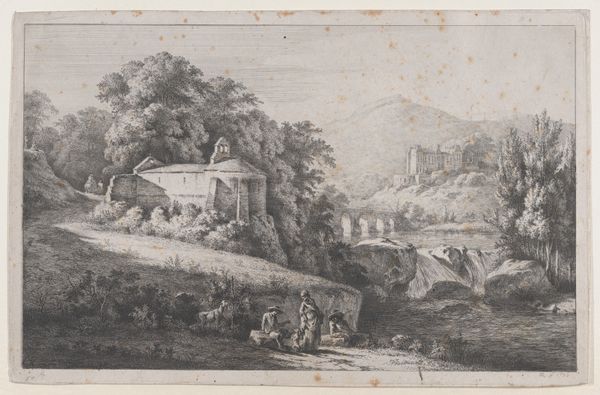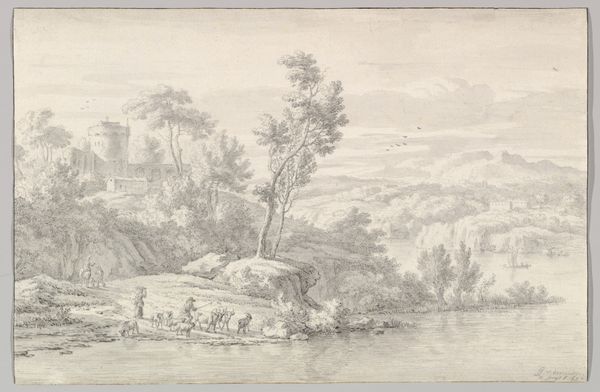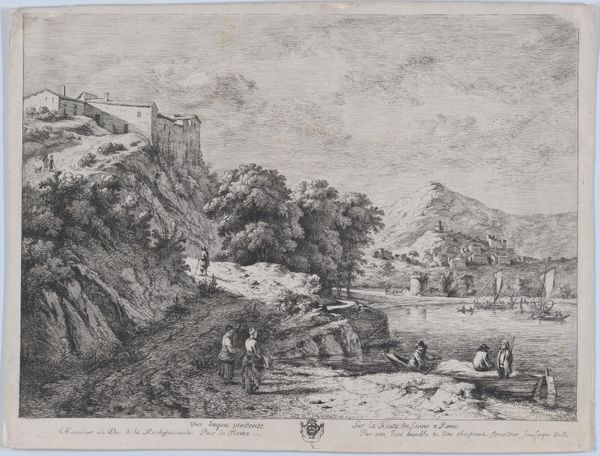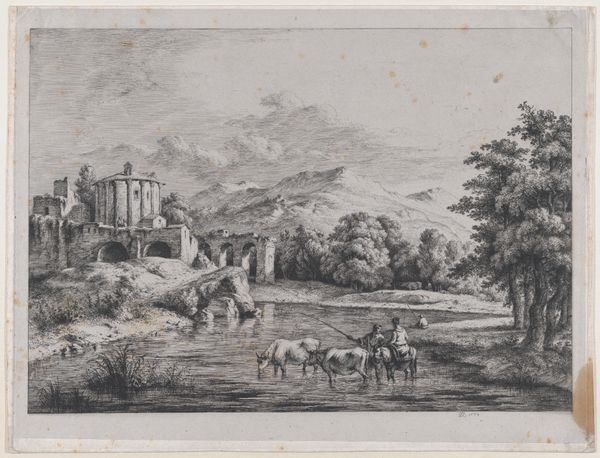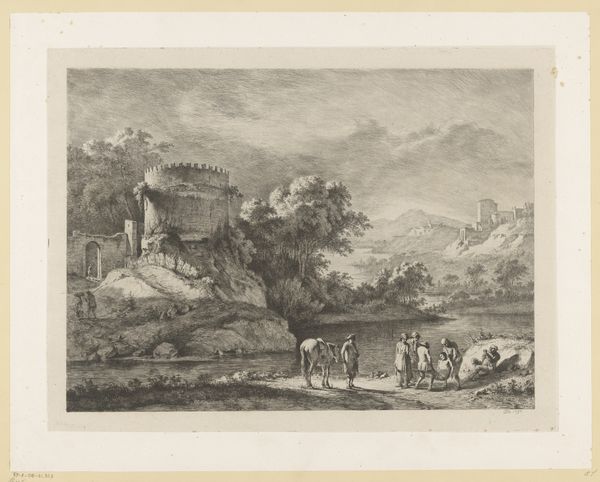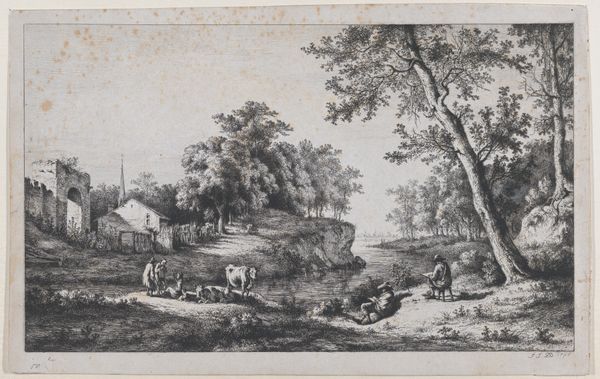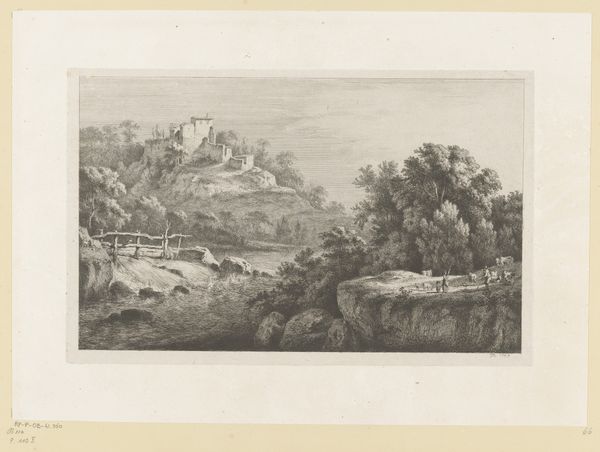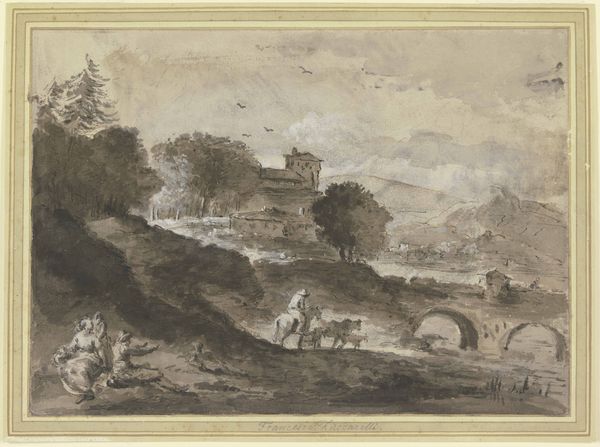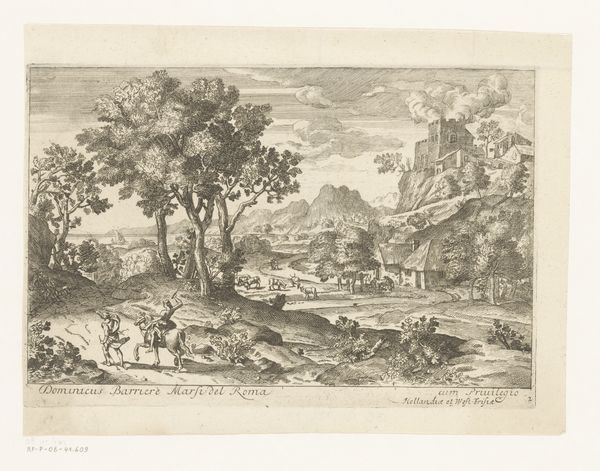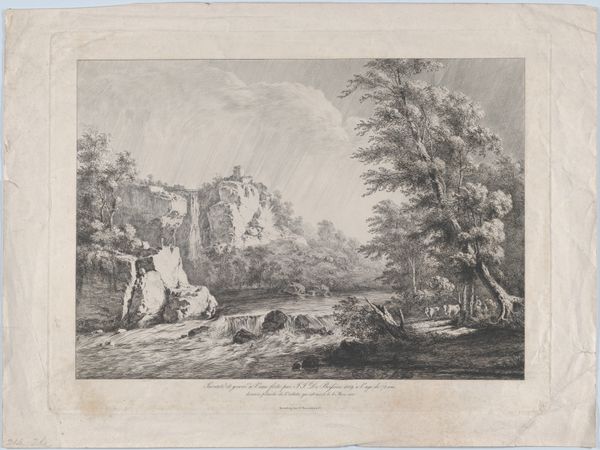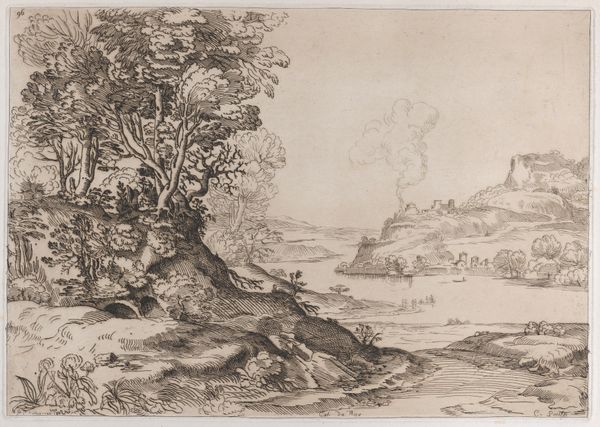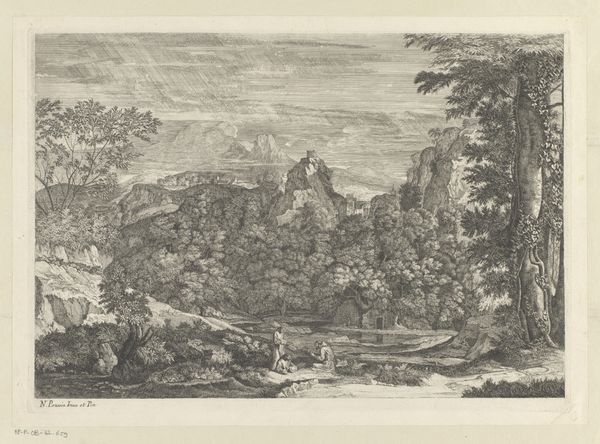
drawing, etching, engraving
#
drawing
#
neoclacissism
#
etching
#
landscape
#
line
#
engraving
Dimensions: Sheet: 8 11/16 × 13 9/16 in. (22 × 34.5 cm)
Copyright: Public Domain
Jean Jacques de Boissieu made this print, River Crossing, using etching and engraving, in 1796. Look closely, and you'll notice the incredible detail achieved through these methods. Etching involves coating a metal plate with a waxy, acid-resistant layer, drawing through this layer to expose the metal, and then bathing the plate in acid, which bites into the exposed lines. Engraving, on the other hand, is the process of cutting lines directly into the metal plate with a tool called a burin. Boissieu combined both techniques to create a rich tonal range and a variety of line qualities. The landscape is rendered with a meticulousness that speaks to the labor involved. Consider the sheer number of lines required to depict the foliage, architecture, and reflections in the water. This isn’t just a picturesque scene; it's a testament to the artist's skill and the time-intensive nature of printmaking. It is a sharp reminder that even seemingly effortless images are the product of immense work. By appreciating the means of production, we recognize the social and cultural significance embedded within the artwork.
Comments
No comments
Be the first to comment and join the conversation on the ultimate creative platform.
